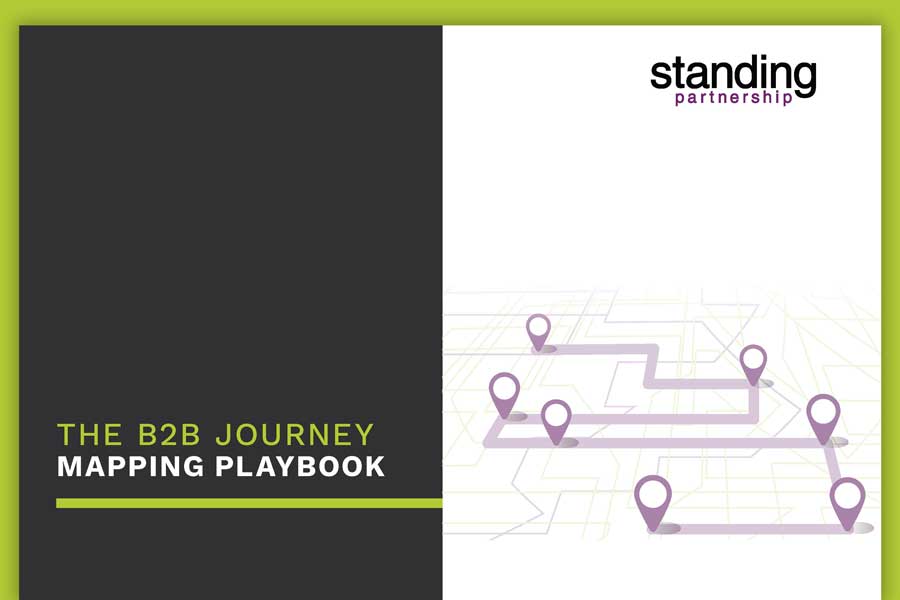Customer Journey Maps and Buyer Personas—Get it Right in 3 Easy Steps
Customer journey maps and buyer personas are critical to your customer experience strategy.
The B2B Customer Journey is often a windy road, made more complex when there are multiple people making decisions during that trip.
That’s why customer journey maps and buyer personas go hand-in-hand. You need to understand all the members of the team. Who takes the lead at each stage? And how do they agree where to go—even when they have different reasons on why they want to go on the trip in the first place?
It’s not enough to map out the critical steps of the end user (that’s the user experience) or reduce friction during after-sale support (that’s the customer service department). You need to understand the decision-making process and all the parties involved to improve customer satisfaction and retention.
We recommend you take the following three steps to identify and understand which customer personas your organization should focus on.
1. Define customer personas
The first step is to list all the influencers and decision-makers in the process. Not just the people who make the final decision but people who influence those who do.
Possible options include people who:
- Use your products/services. (End users depending on your segment, like factory workers, office managers, meeting planners, etc.)
- Experience and research solutions to the pain. (In some cases, they can be different from the end user; think of managers responsible for injury or an administrative assistant assigned to the research process.)
- Make the final decision. (Sometimes that can be an end user, someone in the C-Suite, procurement, or a decision-making committee; in 2018 the average group buying size was 10.8 people.)
- Inform the decision-making process. (In the cases where one person makes the final decision or is consulted to inform the decision.)
- Negotiate the contract/pay the bills. (It’s the least exciting role in most journeys and often treated that way; don’t forget them, this may be where the most considerable pain exists.)
Too often, personas get stalled when team members narrow in on getting beyond the final decision-maker, often a C-Suite exec or procurement. While these personas are critical, you can miss out by forgetting about who influences that final gatekeeper.
After the purchase, it’s never the executive or procurement official that uses the product. The experience after the purchase by the end user influences the perceived return on investment inside the organization and the likelihood those users will advocate to buy from you again.
2. Ask the question: What does success look like…for your customer?
Determining the goal of the journey can be a bit confusing when you go through the process for the first time. That’s because when you set goals for strategic plans, you think about what your company needs to achieve. In the case of journey mapping, you need to focus on the goals your customer is trying to achieve by buying your company’s product or service.
The customers’ goal is seldom what you want them to accomplish: Getting them to buy something from you or getting the best deal possible.
Rather, ask yourself what your customers are trying to solve when they begin the journey. The answer to this question typically is found in your existing customer insights.
3. Understand your customer
You can understand your customers and their goals by mining the data you’ve already collected about them. Customer loyalty today is built on subtle differences between what customers experience when they interact with your business vs. how they interact with your competitors. Differentiating on customer experience and the ease of doing business prevents commoditization and price slashing.
B2B customers judge the value of their partners on four factors:
- Trust: Is there proof that you understand their challenge and you can solve it?
- Authenticity: Does your organization, people and products live up to the promise you made?
- Transparency: Do they believe you’re sharing all the information they need to make an intelligent decision?
- Personal relationships: Do they enjoy working with your team and believe they’re working with people that can meet their needs?
How those values show up in every touchpoint of the customer journey is your company’s secret sauce.
The path to revealing your secret sauce requires investment in customer research to uncover customer expectations at every stage of the buying process and whether your organization meets them.
Stay away from generic customer personas built mostly from demographic data and broad job titles. Instead focus on buyer behavior and what drives their decision-making process. How does that align with the process you take buyers through and how the four factors show up along that path?
Ask yourself specifically, “What would Susan do?” when designing solutions, messaging, technology, or invoices. Think of how the persona (“Susan”) will think and feel, at each touchpoint of the customer journey. Familiarize employees with the organization’s personas to influence alignment and decision-making across the company.
Persona-centric journey mapping can go a long way in improving your company’s customer acquisition and retention metrics. To learn more, read our newest resource, The B2B Journey Mapping Playbook.

